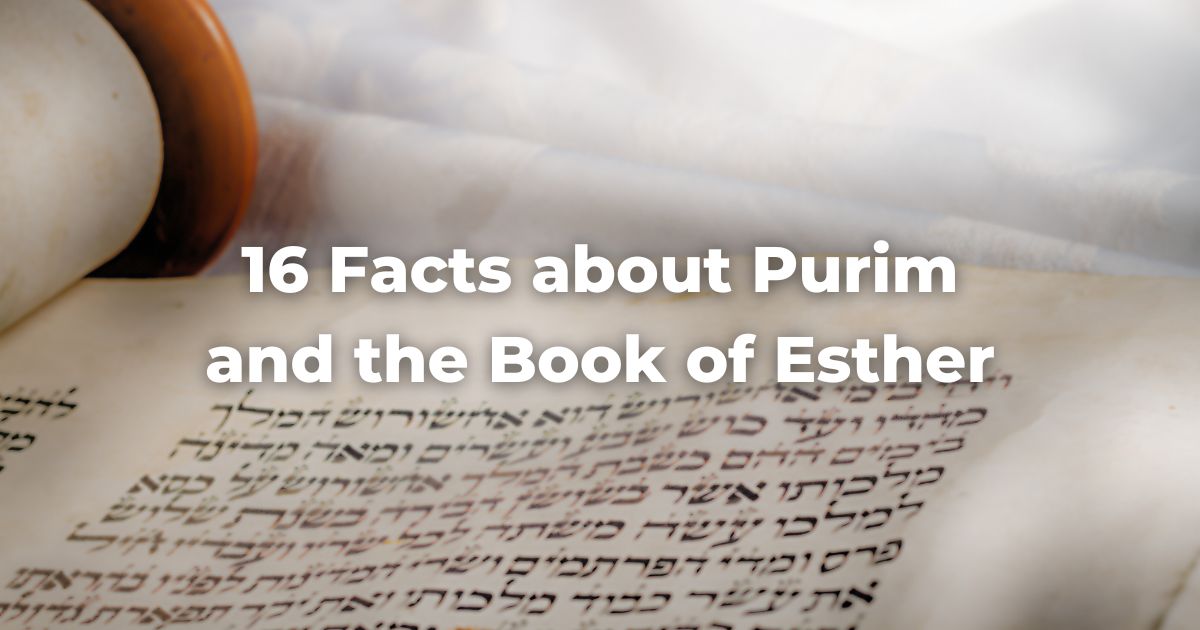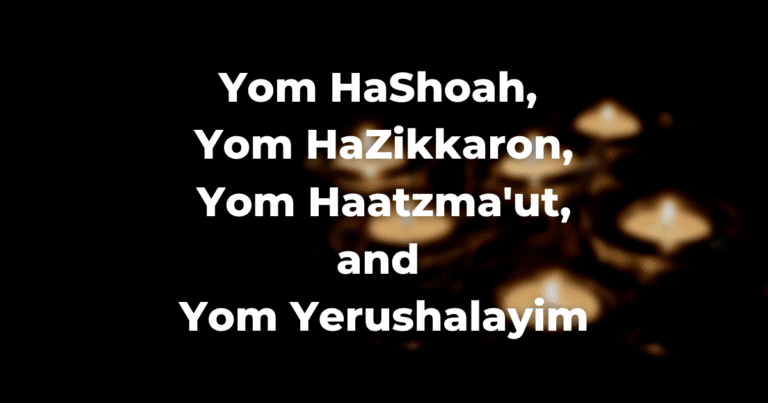The Nature of the Book of Esther
- Esther has 10 chapters, 167 verses, and 5,637 words and purports to explain how the feast of Purim came to be celebrated.
- All the letters of the Hebrew alphabet are found in Esther 3:13.
- The longest verse in the Bible appears in Esther 8:9. It has 43 words in Hebrew (approximately 90 words in the English translation).
- The Hebrew word Mishteh/משתה, meaning “drinking party, banquet,” occurs 20 times in Esther. This is equal to the total of all the other times it is found in the rest of TanakhAn acronym for the name of the Hebrew Bible: Torah, Neviim, and Ketuvim. Read more.
- Esther is unusual in its lack of attention to the Land of Israel. The only reference to it is in describing Mordecai as among the captives “carried away from Jerusalem.”
- Mordecai may have been the first person in history to be called a “Jew.” Before then, Jews were called “Israelites” or “Hebrews.” However, in context the word Y’hudi/יהודי may mean “Judean” (not “Jew”), a reference to the Persian province/מדינה of Yahud/Judea.
- The book has many words that appear nowhere else in Tanakh. These include: Tevet, the tenth Hebrew month; kasher, “fit”; patshegen, “a copy of the (written) text”; ahashdarp’nim, a Persian word for the King’s officers; pur, Persian word meaning “lot”; and karpas, the Persian word for cotton (This is actually not the same word as the seder plate item. That comes from the Persian word karafs, meaning “celery”; however, our current pronunciation of that item was probably influenced by the word here in Esther).
- G!d’s name is not mentioned even once in the entire Book. However, the redactors of the Greek version in the Septuagint interspersed many additional verses throughout, to demonstrate Esther’s and Mordecai’s religious devotion. These Additions to the Book of Esther, while not in Tanakh, are placed in the Apocrypha (“of doubtful origin”) in Protestant Bibles, and are treated as canonical in Roman Catholic Bibles.
Placement of the Book of Esther in the Tanakh
- The book of Esther covers a ten-year period that seems to fit in the 57-year gap between Ezra 6 and 7, and falls somewhere in the 81 years between the return led by Zerubbabel and the one led by Ezra.
- In Tanakh, Esther comes between the books of Ecclesiastes and Daniel. In the Protestant canon, however, Esther appears between Nehemiah and Job. In the Roman Catholic and Greek Orthodox canons, Esther appears between Judith and I Maccabees and includes six chapters that are considered apocryphal in the Jewish and Protestant traditions.
- Theme and language characterize Esther as one of the latest books of the Hebrew Bible, probably dating from the 2nd century BCE. Nothing is known of its author. In fact, Esther is the last of the 24 books of the Tanakh to be canonized by the Sages of the Great Assembly, and evidence suggests that the version given in the Septuagint goes back to older sources than the version given in the Tanakh.
- Esther is one of the five scrolls/מגילות read on specific Jewish holidays. The others include the Song of Songs (Passover), Ruth (Shavuot), Lamentations (Tishah B’Av), and Ecclesiastes (Sukkot). The book of Jonah is read on Yom Kippur but is not considered part of this grouping.
- Esther’s inclusion in the canon, as well as the observance of the feast of the 14th and 15th of Adar, still met with strong opposition on the part of the Jewish authorities in Jerusalem as late as the 3rd century CE.
- Esther is the only book not found among the Dead Sea Scrolls, because they chose to not place the holiday on their calendar and/or because they disapproved of Esther’s marriage to the non-Jewish King Achash-veirosh.
The Holiday of Purim
- When King Achash-veirosh made Esther his queen, he declared a Persian holiday called The Feast of Esther. This is perhaps the first holiday in history named for a woman.
- Haman was hanged at Esther’s second banquet on the 16 of Nisan, the second day of Passover! This also means that the first banquet she held was on the first day of Passover.
Author
-

Rabbi Dr. J.B. Sacks (he/him) is the Education and Curriculum Specialist for Stories of Music Project at UCLA and serves as spiritual leader of Congregation Am HaYam (Ventura). The first openly LGBTQ+ rabbi in the Conservative Movement, Rabbi Sacks is an advocate for inclusion in Jewish life and social justice. His most recent publication is Psalms in the Key of Healing. Rabbi Sacks is the eighteenth generation of rabbis on his mother’s side and lives with his husband Steven Karash in Palm Desert, California. They have an adult son, Evan.
View all posts






